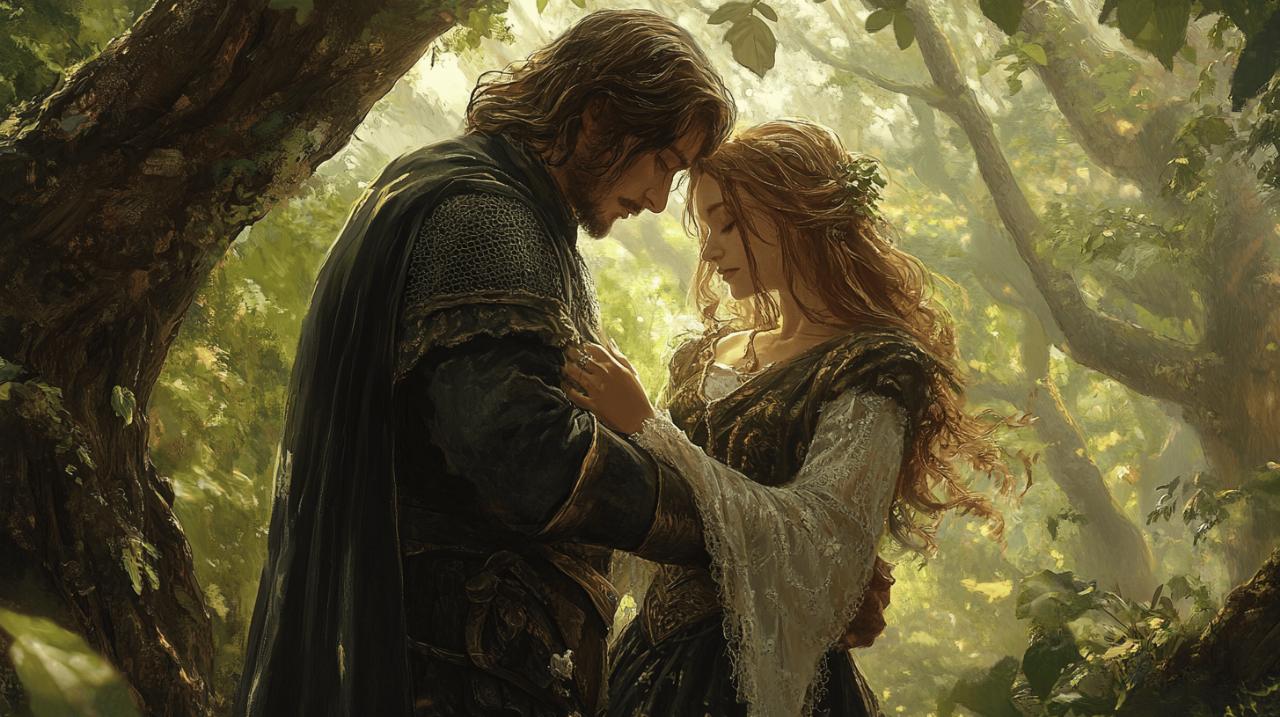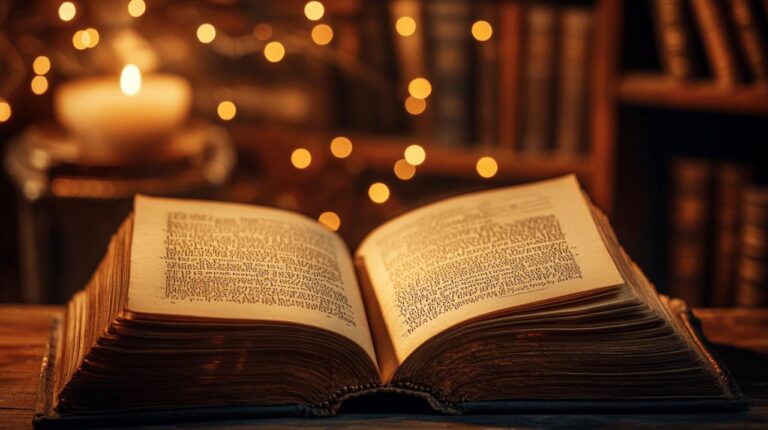The tale of Tristan and Isolde stands as one of the most enduring romantic narratives to emerge from the medieval world, a story steeped in Celtic legend and courtly tradition. Its central conceit is deceptively simple: a love potion intended for a royal marriage ceremony finds its way into the wrong hands, or rather, the wrong goblet, igniting a passion so intense that it defies loyalty, honour, and ultimately, life itself. What began as an Anglo-Norman romance in the twelfth century has evolved through countless retellings, each iteration reflecting the preoccupations and sensibilities of its age. From the harsh, fast-paced narratives of Béroul to the psychologically nuanced verse of Gottfried von Strassburg, and later the chivalric embellishments of Sir Thomas Malory, the legend has proven remarkably adaptable. Yet at its heart, the story remains a meditation on the conflict between duty and desire, a theme that resonates as powerfully today as it did in the courts of medieval Cornwall and Ireland.
A Forbidden Love Born from a Magical Draught
The fateful journey across the irish sea
Tristan's journey to Ireland is marked by courage and a sense of duty that would define his character, even as fate conspired to undo him. Orphaned young and raised in the court of Lyonesse, he matured into a knight of exceptional skill, excelling in all the arts of chivalry. His uncle, King Mark of Cornwall, recognised both his prowess and his loyalty, entrusting him with a mission of great diplomatic importance. Tristan was to travel across the Irish Sea to secure the hand of Isolde, a princess renowned for her beauty and grace, for the king himself. The task was complicated by the presence of a fearsome dragon that terrorised the Irish countryside, but Tristan, ever the valiant warrior, slayed the beast and thereby earned the right to ask for Isolde's hand on behalf of his uncle. It was a triumph that should have cemented his reputation and secured a prosperous alliance, yet it also set in motion a chain of events that would bring both ecstasy and despair.
When the wrong goblet changes everything
The journey back to Cornwall should have been a straightforward affair, a voyage of anticipation and ceremony. Isolde's mother, mindful of her daughter's apprehension about marrying an older king she had never met, prepared a love potion designed to ensure that the marriage would be one of genuine affection. This magical draught was entrusted to a servant with strict instructions: it was to be shared only by Isolde and King Mark on their wedding night. Yet fate, or perhaps simple human error, intervened. During the sea crossing, Tristan and Isolde, weary from travel and engaged in conversation, drank from the wrong vessel. The potion took hold instantly, binding them in a passion so overwhelming that it rendered all other considerations irrelevant. The accidental consumption of this enchanted drink transformed what might have been a dutiful marriage into a forbidden affair, one that would test the limits of loyalty and honour. They remained aware of their obligations to the king, yet the force of their mutual attraction proved impossible to resist, creating a tension that would define the remainder of their lives.
Knights, Kings, and the Betrayal That Shook Camelot's Shadow
The Divided Loyalties of a Cornish Warrior
Tristan found himself caught between two irreconcilable imperatives: his devotion to King Mark and his consuming love for Isolde. The code of chivalry demanded absolute fidelity to one's lord, and Tristan had been raised to embody that ideal. Yet the love potion had not merely sparked desire; it had created a bond that felt as inviolable as any oath. The result was a series of elaborate deceptions and secret meetings, each one a betrayal of the trust Mark had placed in his nephew. Mark, for his part, was portrayed in various versions of the tale with differing degrees of sympathy. Béroul depicted him as a jealous and vengeful figure, quick to suspect and eager to enact revenge. Gottfried von Strassburg, however, offered a more conflicted portrayal, showing a king torn between affection for his wife and his suspicions of infidelity. This psychological complexity added depth to the narrative, transforming it from a simple tale of forbidden romance into a meditation on the corrosive effects of mistrust and the impossibility of reconciling love with duty.
Marriage vows versus enchanted devotion
Isolde's marriage to King Mark proceeded as planned, yet it was a union founded on deceit from the very first night. The potion that should have bound her to her husband had instead tied her irrevocably to Tristan. The lovers conducted their affair with a mixture of cunning and desperation, employing ruses and accomplices to evade detection. On several occasions, Mark was on the verge of discovering the truth, only to be misled by carefully staged scenes or persuasive lies. One such moment of near-discovery occurred in the forest of Morois, where the king found the lovers asleep with a sword laid between them, a symbol that Tristan insisted demonstrated their innocence. Whether Mark truly believed this or chose to accept it out of a desire to preserve his own dignity remains a subject of interpretation, but it bought the lovers a temporary reprieve. Eventually, however, the weight of suspicion and the pressure of courtly intrigue forced Tristan into exile. He left Cornwall not out of choice but out of necessity, driven away by the very king he had served so faithfully. Isolde remained behind, bound by her marriage vows yet consumed by longing for the man she could not have.
Passion, Exile, and the Price of Eternal Longing
Secret Meetings in the Forest of Morois
 The forest of Morois became a refuge for the lovers, a place where the constraints of courtly life could be temporarily set aside. After their banishment, Tristan and Isolde lived in the wild, subsisting on whatever the forest provided and finding solace in each other's company. This period of exile was both idyllic and fraught with peril, for they were fugitives in their own land, subject to the whims of a king who oscillated between forgiveness and fury. The forest, with its dense canopy and hidden glades, offered a kind of sanctuary, yet it was also a place of isolation and hardship. Over time, the lovers began to question whether the potion had been a blessing or a curse. Some versions of the tale suggest that the effects of the potion eventually wore off, leaving them to confront the reality of their choices. Even if the magic faded, the bond between them did not, suggesting that what had begun as enchantment had deepened into something more profound. Eventually, a reconciliation of sorts was brokered, and Tristan was permitted to return to court, though the truce was fragile and short-lived. The lovers knew that their time together was limited, and the forest of Morois became a symbol of both their greatest happiness and their deepest regret.
The forest of Morois became a refuge for the lovers, a place where the constraints of courtly life could be temporarily set aside. After their banishment, Tristan and Isolde lived in the wild, subsisting on whatever the forest provided and finding solace in each other's company. This period of exile was both idyllic and fraught with peril, for they were fugitives in their own land, subject to the whims of a king who oscillated between forgiveness and fury. The forest, with its dense canopy and hidden glades, offered a kind of sanctuary, yet it was also a place of isolation and hardship. Over time, the lovers began to question whether the potion had been a blessing or a curse. Some versions of the tale suggest that the effects of the potion eventually wore off, leaving them to confront the reality of their choices. Even if the magic faded, the bond between them did not, suggesting that what had begun as enchantment had deepened into something more profound. Eventually, a reconciliation of sorts was brokered, and Tristan was permitted to return to court, though the truce was fragile and short-lived. The lovers knew that their time together was limited, and the forest of Morois became a symbol of both their greatest happiness and their deepest regret.
The white sail that never came
Tristan's subsequent wanderings took him far from Cornwall, and in his travels, he encountered another woman named Isolde, known as Isolde of the White Hands. Whether out of loneliness, a desire to move on, or simply a sense of duty, he married her, though he could never bring himself to consummate the union. His heart remained with the first Isolde, and the marriage to the second was a hollow formality. When Tristan was gravely wounded in a later conflict, he knew that only one person could heal him: Isolde of Ireland. He sent a messenger to Cornwall with instructions to bring her back, and to signal her arrival by hoisting a white sail if she agreed to come. If she refused, the sail was to be black. As Tristan lay dying, his new wife, consumed by jealousy and aware of his enduring love for her namesake, lied to him. She told him that the ship approaching the harbour bore a black sail, leading him to believe that Isolde had abandoned him. In despair, he surrendered to his wounds and died. When Isolde arrived and discovered his body, she was overcome with grief and died beside him, her heart unable to bear the loss. The tragedy was complete, and the legend tells that trees grew from their graves, their branches intertwining in death as the lovers had been intertwined in life.
Why this medieval tale still captivates modern readers
From courtly romance to contemporary retellings
The story of Tristan and Isolde has undergone numerous transformations since its origins in the twelfth century. Each retelling has reflected the values and preoccupations of its time, yet the core narrative has remained remarkably consistent. Thomas of Britain's version, composed around 1170, softened some of the harsher elements of the original, introducing a more courtly sensibility. Gottfried von Strassburg's German adaptation, widely regarded as the finest literary treatment of the legend, delved deeply into the psychological dimensions of love, portraying it as a mystic force that was both exalting and destructive. His incomplete work, left unfinished at his death in 1210, nevertheless influenced countless later writers. By the fifteenth century, Sir Thomas Malory had integrated the tale into his grand compendium of Arthurian legend, Le Morte Darthur, where Tristan was reimagined as one of the noble knights of the Round Table. Malory's version emphasised chivalrous deeds and courtly love, downplaying the more transgressive elements of the affair. In the nineteenth century, Richard Wagner drew inspiration from Gottfried's poem to create his opera Tristan und Isolde, premiered in 1865, which remains one of the most celebrated works in the operatic repertoire. Each of these adaptations has added new layers of meaning, ensuring that the legend remains vital and relevant.
The enduring power of star-crossed lovers
The tale's enduring appeal lies in its exploration of themes that transcend time and culture. At its heart, it is a story about the conflict between individual desire and social obligation, a tension that resonates in any era. The question of whether the lovers are victims of fate or agents of their own choices remains open to interpretation. Did the love potion rob them of free will, or did it merely reveal a passion that would have existed regardless? This ambiguity gives the narrative its depth and allows each generation of readers to find their own answers. The tragedy of Tristan and Isolde is not simply that they could not be together, but that their love, however genuine, brought suffering to everyone it touched. King Mark, Isolde of the White Hands, and countless others were casualties of a passion that could not be contained. Yet the story also celebrates the transformative power of love, suggesting that some experiences are worth any price. The image of the intertwined trees growing from the lovers' graves serves as a poignant reminder that true love, however thwarted in life, can endure beyond death. In an age where romantic love is often idealised and commodified, the legend of Tristan and Isolde offers a more complex and bittersweet vision, one that acknowledges both the ecstasy and the agony of unattainable devotion.





